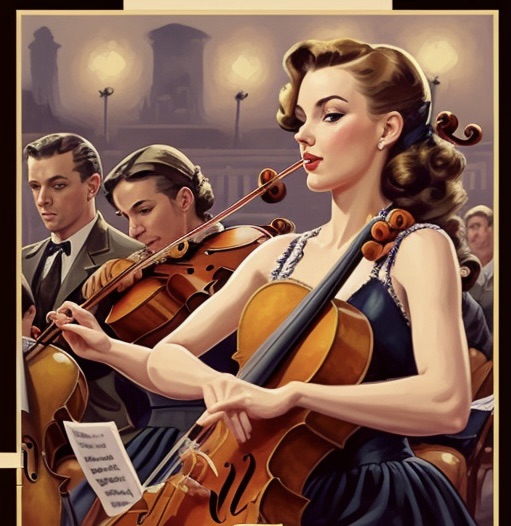
You can check out any time you like, but you can never leave.” The Eagles’ Hotel California was once just a cryptic allegory—rock-star excess, American decadence, or some vague sense of spiritual entrapment. But these days, it feels more like a business model. A system that isn’t quite capitalism, isn’t quite socialism, and isn’t quite feudalism, yet borrows liberally from all three. It thrives on contradictions: ownership without possession, labor without wages, freedom without exit. You don’t buy things; you subscribe to them. You don’t earn a living; you generate engagement. You don’t make choices; you navigate dark patterns designed to keep you locked in. It’s a place where the lights are always on, the services are always recurring, and the bill is always due.
Yet, because it doesn’t fit neatly into any ideological framework, it remains largely unnamed—an indeterminate economy with no official manifesto, just a series of invisible contracts you clicked “agree” on without reading. Welcome to the new system. We hope you enjoy your stay.
Tollism: The Pay-Per-Sigh Economy
Everything is metered, from roadways to breathing space. A fee lurks behind every minor convenience, and every attempt to bypass the toll incurs a greater one. Want to skip the ad? Pay. Need to avoid traffic? Pay. Want to talk to a human instead of a bot? Pay. The most mundane aspects of life now resemble a turnstile, each step forward accompanied by an invisible hand demanding a surcharge.
• Not pure capitalism: Classic capitalism is about private ownership and free exchange, but tollism thrives on artificial scarcity. You’re not paying for a good or service—you’re paying to avoid inconvenience, delay, or exclusion. It’s closer to extortion than a free market.
• Not socialism either: Socialism often critiques capitalism’s commodification of basic needs, but tollism isn’t about workers owning the means of production or redistributing wealth—it’s about leveraging every aspect of daily life as a microtransaction.
Permaservism: You’re a Medieval Peasant, but Instead of Turnips, You Pay in Engagement
You no longer own your labor outright—it’s a form of digital serfdom where your productivity is measured in likes, clicks, and impressions. Algorithms determine your sustenance, and the landlord—the platform—extracts its tithe before you even see the fruits of your labor. You work for exposure, for visibility, for relevance, but rarely for anything tangible.
• Not feudalism: In feudalism, peasants at least had land to work (even if they owed a portion to the lord). Here, workers don’t own anything—not even their own audience. The “lords” are algorithms and platforms that dictate visibility.
• Not capitalism in the classical sense: A capitalist laborer gets wages in return for work. Here, people labor endlessly—posting, streaming, commenting—hoping to be rewarded with exposure, which itself is a currency that may or may not convert into income.
Recurrism: Like a Gym Membership for Existing, but Less Rewarding
Existence itself is now a subscription model. You don’t just buy things—you enroll in them. Software, entertainment, even appliances require perpetual payments to remain functional. Forget to renew, and your world starts shutting off, like a dystopian version of a free trial expiring.
Not traditional capitalism: In classical capitalism, you buy a product and own it. Recurrism replaces ownership with indefinite leasing, making consumers permanent debtors to their own necessities.
• Not socialism either: While socialism often criticizes wealth concentration, it usually assumes that goods and services should be collectively owned or universally provided—not that they should be indefinitely rented at a profit.
Leasism: Your Entire Life Is a Rental Car with a “Please Don’t Scratch” Vibe
Ownership is passé. Your home, your car, even your furniture—all rented, all temporary, all just out of reach. This is the gig economy’s final form: not just renting out your labor, but your entire existence, where everything feels contingent on keeping your credit score above an invisible threshold. You may live here, but don’t get too comfortable.
• Not communism: In theory, communism advocates for abolishing private property in favor of collective ownership. But in leasism, private property still exists—it’s just concentrated in the hands of the few who rent it out.
• Not capitalism as classically defined: The promise of capitalism was ownership—home ownership, business ownership, asset accumulation. Leasism negates this, ensuring that assets remain perpetually just out of reach.
Ghostownershipism: You “Own” That E-Book Like Casper Owns a Timeshare
Congratulations, you “own” a movie—until the studio pulls it from your digital library. You “own” software—until they phase out support. Your books, your music, your files—everything exists in a corporate purgatory where access can be revoked at a moment’s notice. Ownership has been replaced by the illusion of access, one update away from disappearing.
Not socialism: In a socialist framework, intellectual property might be controlled by the state or made freely available. But ghostownershipism isn’t about sharing—it’s about ensuring that even when you “buy” something, you’re really just licensing it.
• Not capitalism in its traditional form: Classic capitalism thrives on ownership, but ghostownershipism relies on the illusion of ownership. It’s capitalism that refuses to give up control, ensuring that purchases never truly belong to the buyer.
Inertiarchy: Canceling Subscriptions Requires Solving a CAPTCHA from Hell
The modern economy thrives on inertia. You sign up with a click but cancel through a labyrinth. Hidden menus, endless hold times, mysterious reactivations—companies rely on the fact that most people will surrender before breaking free. Like Hotel California, you can check out anytime you like, but good luck leaving.
• Not feudalism: Feudal obligations were often lifelong, but they were at least explicit. Here, obligations are hidden behind fine print, dark patterns, and friction-filled exit routes.
• Not traditional capitalism: A functional free market assumes informed consumers who can freely choose and exit transactions. Inertiarchy thrives on preventing people from leaving.
Micropriegemony: Death by a Thousand “Premium” Upgrades
Everything comes in tiers, and the base model is intentionally unbearable. Pay extra to remove the ads, to get the features that should have been included, to make the thing you already paid for actually usable. A thousand tiny inconveniences, each with a price tag, add up to a life spent nickel-and-dimed into submission.
Not capitalism in the classical sense: Adam Smith’s capitalism presupposed that markets would produce better products at competitive prices. Micropriegemony, instead, creates intentionally inferior products so consumers feel compelled to upgrade.
• Not socialism: This isn’t about ensuring equal access to resources. If anything, it ensures the opposite—segmenting people into artificially created castes of access and privilege.
Decaylism: Planned Obsolescence, but Make It Vibes
Your phone slows down, your apps stop updating, your clothes feel unfashionable—none of this happens by accident. Products are designed to expire, not just physically but aesthetically, socially. Even ideas have an expiration date, a built-in obsolescence that forces you to chase the next iteration, lest you fall out of sync with the ever-accelerating now.
Not traditional capitalism: Capitalism encourages innovation, but decaylism encourages controlled decay—ensuring that no product, idea, or trend lasts long enough to be truly valuable.
• Not Marxism: Marx criticized capitalism for alienating workers from their labor, but decaylism alienates consumers from their purchases, ensuring that every possession, from phones to aesthetics, is designed to lose its value over time.
Fauxmunism: Join Our Wellness Collective!™
Everything is “community” now, but only in the branding sense. Workplaces, apps, brands all speak the language of collectivism while functioning as pure profit-extracting machines. You’re not an employee, you’re part of the family. You’re not a customer, you’re a valued member. It’s socialism without the redistribution, collectivism without the collective—just a warmer, fuzzier form of corporate capture.
Not actual communism: In theory, communism is about collective ownership of resources and decision-making power. Fauxmunism borrows the language of collectivism but remains thoroughly corporate, using community branding to drive profits.
• Not traditional capitalism either: It’s not about straightforward transactions but about selling the feeling of belonging, of ethical consumption, without any structural change.
Leaving the Hotel (or Trying To)
In Hotel California, the guests are drawn in by something alluring—“such a lovely place”—but soon realize they’ve entered a maze where every exit leads back inside. That’s the essence of this system: it offers just enough convenience to make you forget the cage. Why cancel when it’s only $9.99 a month? Why buy when you can lease forever? Why own when the cloud remembers for you?
And so, we remain inside, scrolling, subscribing, renewing—caught in a structure that resists definition but shapes every aspect of modern life. Not quite a market, not quite a commune, not quite a prison. Something new, something slippery, something with no clear way out.
You can check out any time you like. But can you ever leave?
This is the modern condition: a world where everything is rented, borrowed, or metered, where participation is mandatory, and where opting out requires a level of effort most people can’t afford. And yet, we lack the words to talk about it. We reach for old binaries—capitalism vs. socialism, freedom vs. control—but they no longer fit. We’re living under something new, something we haven’t yet named.
These contradictions reveal why we struggle to name our current economic condition. It isn’t traditional capitalism, because ownership and free markets have been replaced by controlled access and platform dependency. It isn’t socialism, because nothing is being equitably distributed—just repackaged in ways that create new dependencies. It isn’t feudalism, because the new lords are faceless corporations rather than landed aristocrats. And it isn’t dystopian in the way Orwell or Huxley imagined—because instead of an iron fist or a drugged-up populace, we get a system that offers just enough convenience, just enough comfort, to prevent revolt.
It’s something new, something slippery. It thrives on engagement, inertia, and a kind of synthetic scarcity. It extracts wealth without always feeling oppressive, and it controls without always feeling coercive. It operates in a space where capitalism, socialism, and feudalism overlap, but it fully belongs to none of them. Until we name it, it will continue to shape our lives unnoticed.



















